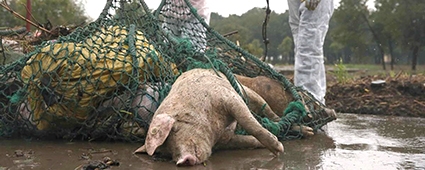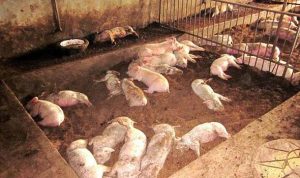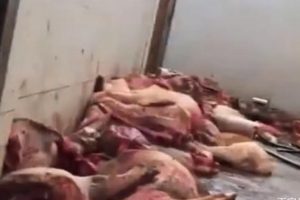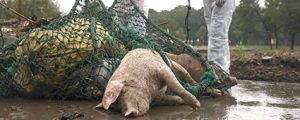
I was recently traveling in China and South East Asia and noticed a small article in the Global edition of CHINA DAILY dated Dec 4, 2019 and a similar one in the South China Morning Post (Hong Kong) of the same date.
The headlines read: “Blast at Food Factory Kills Four, Injures 10” and “Four Killed in Explosion at Food Processing Factory.”
The explosion and ensuing fire occurred at a food processing factory in Beijing’s Shunyi district. The plant is part of Kyo-Nichi Todai Foods Co., owned by Tokyo Boeki Holdings Corporation in Japan. I’m not familiar with this plant but apparently it was founded in 1987 and specializes in processing 70,000 tons annually of fruit and vegetable fillings and bean paste products for export to Japan, Southeast Asia and the United States.
One article was quick to mention that according to the “Ministry of Emergency Management, the number of industrial accidents fell by 19.8 percent and the number of deaths declined by 18.9 percent in the first six months compared with the same time last year.” It wasn’t clear if these figures referred to accidents/deaths in food production companies only.
And to give people some added comfort “the Beijing municipal government will carry out a citywide safety inspection soon to ensure production and firefighting safety.” Really?

Slaughtering of Dead & Sick Pigs Closes Model Plant
On the same day under the “Hygiene” section of the South China Morning Post another article described how a slaughterhouse in Foshan, Guangdong Province (southern China) was closed due to the apparent slaughtering of dead and sick pigs that ended up on the market. The plant was exposed in a television program broadcast by Guangdong Radio and Television after an undercover reporter was approached at the slaughterhouse and offered two dead pigs for 300 yuan (about HK$334 or US$42 each).

He saw another dead pig being processed, butchered and then marked as having been inspected and cleared for sale. While some staff initially refused to process the dead pigs, they later complied after being paid a bribe of at least 100 yuan (about US$14). The newly stamped and inspected pigs were then transported to a wet market in Huangpu district about 60 km away where they were offered for sale. “See the fresh pork. It’s still warm” one stall owner claimed (and was filmed as saying).
This slaughterhouse had previously been considered an “example enterprise” for pig slaughter by the province’s agricultural department. In addition to slaughtering dead pigs, the plant was accused of selling some parts of the pig that had died from disease and should have been burned. It was ordered closed and staff were removed by police. And now “the authorities have been ordered to inspect all pig slaughterhouses in the Nanhai district.”

This report on December 4, 2019 came at a time when African Swine Fever had already decimated 50% of China’s hog herd and pork prices were soaring. The news article didn’t mention if any of the slaughtered dead pigs actually had swine fever. But who can be sure?
Luckily, I am a vegetarian so pork isn’t an item on the menu that I would choose…but it makes one awfully nervous when considering what to eat and where to eat in China these days. There is MUCH to be done in the area of food and plant safety and I wonder if China will ever be ready to meet our current FSMA requirements. To be fair…there are many plants that are NOT like the ones mentioned above and are working hard to be in compliance. They just seem to be few and far between right now.
Noon International has boots on the ground in China and has been working there for over 30 years. We’re happy to assist with any product inquiries you may have for China products. But don’t kid yourself. You have to be there or have folks you trust to watch and monitor production. Every step of the way.
By Lily Noon
Sources:
- South China Morning Post, Dec 4, 2019 “Guangdong slaughterhouse closed after TV probe.” Zhuang Pinghui
- South China Morning Post, Dec 4, 2019 “Four Killed in explosion at food processing factory.” Zhuang Pinghui
- China Daily Global Edition, Dec 4, 2019 “Blast at food factory kills four, injures 10” Xin Wen
最近、中国と東南アジアを訪れた際、中国日報(チャイナデイリー)の2019年12月4日付けグローバル版と同日の南華早報(サウスチャイナモーニングポスト)に、似たような小さな記事が掲載されていました。
次のような見出しでした。「工場爆発で4人死亡、10人負傷」、「食品加工工場の爆発で4人死亡」。
北京の順義区にある食品加工工場で、爆発と火災があったのです。日本の東京貿易ホールディングス傘下の北京京日東大食品の工場でした。この工場のことを知っているわけではありませんでしたが、1987年に開設され、野菜と果物の具材やあんこの製造を専門として年間7万トンの生産量を有し、製品は日本、東南アジア、米国などに輸出されていました。
ある記事では、すぐさま次の説明がありました。「応急管理部によると、上半期の産業事故の件数は前年比19.8%減、死者数は同18.9%減少している」。これらの数値が食品加工業界のみの数値なのかどうかは、明らかではありませんでした。
また、読者を安心させるかのように、次のことも言及されていました。「北京市は、全域の安全検査をまもなく実施して、生産および消火活動の安全を確認する」。本当なのでしょうか?
モデル食肉解体工場が死亡獣畜と病畜を処理
また、同じ日の南華早報の「衛生」セクションには、広東州仏山市の食肉解体工場で死後および病気のブタが解体され、それが市場に出回ったため、この工場が閉鎖されたという記事が掲載されていました。この工場は、広東ラジオ・テレビ局の記者が身分を伏せて取材中に、死んだブタ2頭を300元(米ドルにして約42ドル)で販売すると提示されたことから、明るみに出ました。
この記者は、ほかにも死後のブタが解体・処理され、検査済み・販売可能というラベルを付けられているところを見たそうです。一部の職員は、死んだ家畜を処理することに当初は難色を示したものの、100元(約14ドル)以上の賄賂を提示されて応諾しました。こうして検査済みのラベルを貼られた豚肉は、60キロほど離れた黄埔区の生鮮食品市場に輸送され、そこで販売されました。露店の店主が「新鮮な豚肉だよ。ほら、まだ温かいよ」と言って販売している様子が、テレビカメラにとらえられました。
この解体工場は、以前に省の農業部から豚肉解体処理のモデル工場とされたことがあります。しかし、死肉を処理していただけでなく、疫病で死んだブタの一部すら販売していたと報じられています。疫病で死んだ家畜は、焼却すべきところです。この工場には閉鎖命令が下り、職員は警察に連行されました。その後、「南海区の豚肉解体工場をすべて検査する命令が下った」とのことです。
この記事は2019年12月4日付けでしたが、その時点ですでに中国の家畜ブタの50%がアフリカ豚コレラにかかり、豚肉価格は急騰していました。この記事では、解体処理された死肉が豚コレラにかかっていたとはしていませんでした。しかし、かかっていなかったとも言えません。
幸いなことに、私はベジタリアンなので豚肉を食べることはありませんが、中国で食事をしようとする際にどこで何を食べるかには、かなり神経質にならざるを得ません。食品と労働環境の安全確保に関しては課題が山積みです。中国がいつかFSMA(食品安全強化法)の要件を満たすようになるのかどうかは疑問です。もちろん、このようなひどい工場ばかりではなく、コンプライアンスの努力を重ねている工場もたくさんあります。ただ、現時点ではまだ少数のようです。
Noon Internationalでは、中国で30年以上の取引の実績があり、現地に根を張っています。中国産の製品に対するお問い合わせにも、喜んでご対応させていただきます。ただし、くれぐれも過信は禁物です。自ら現地に赴くか、信頼できる現地の人に依頼して、生産現場を監視する必要があります。すべての工程に目を光らせなければなりません。
Lily Noon
出典:
- South China Morning Post, Dec 4, 2019 “Guangdong slaughterhouse closed after TV probe.” Zhuang Pinghui(南華早報、2019年12月4日付け、「広東の解体工場、テレビ報道後に閉鎖」、記者:Zhuang Pinghui)
- South China Morning Post, Dec 4, 2019 “Four Killed in explosion at food processing factory.” Zhuang Pinghui(南華早報、2019年12月4日付け、「食品加工工場の爆発で4人死亡」、記者:Zhuang Pinghui)
- China Daily Global Edition, Dec 4, 2019 “Blast at food factory kills four, injures 10” Xin Wen(中国日報、2019年12月4日付け、「工場爆発で4人死亡、10人負傷」、記者:Xin Wen)
